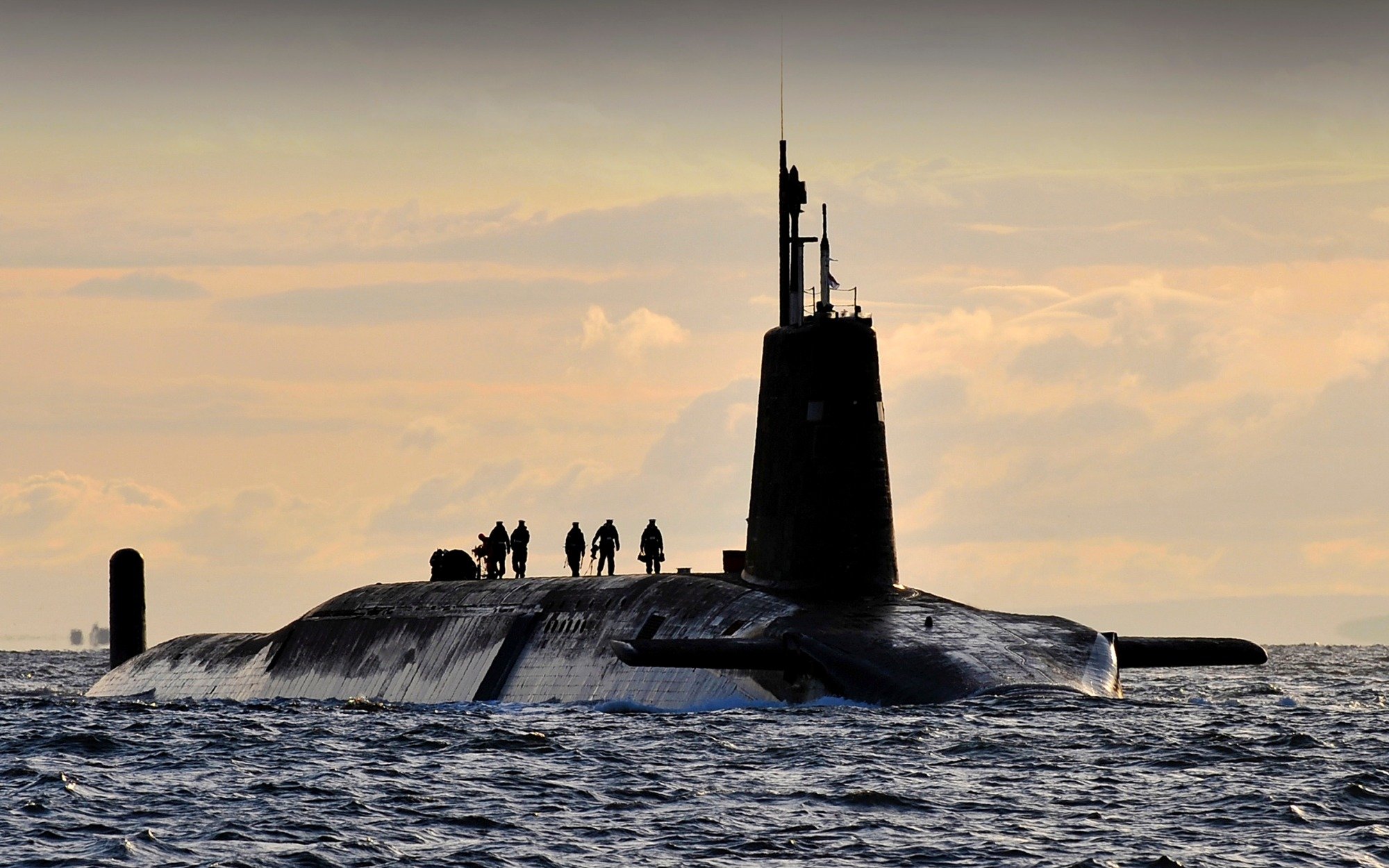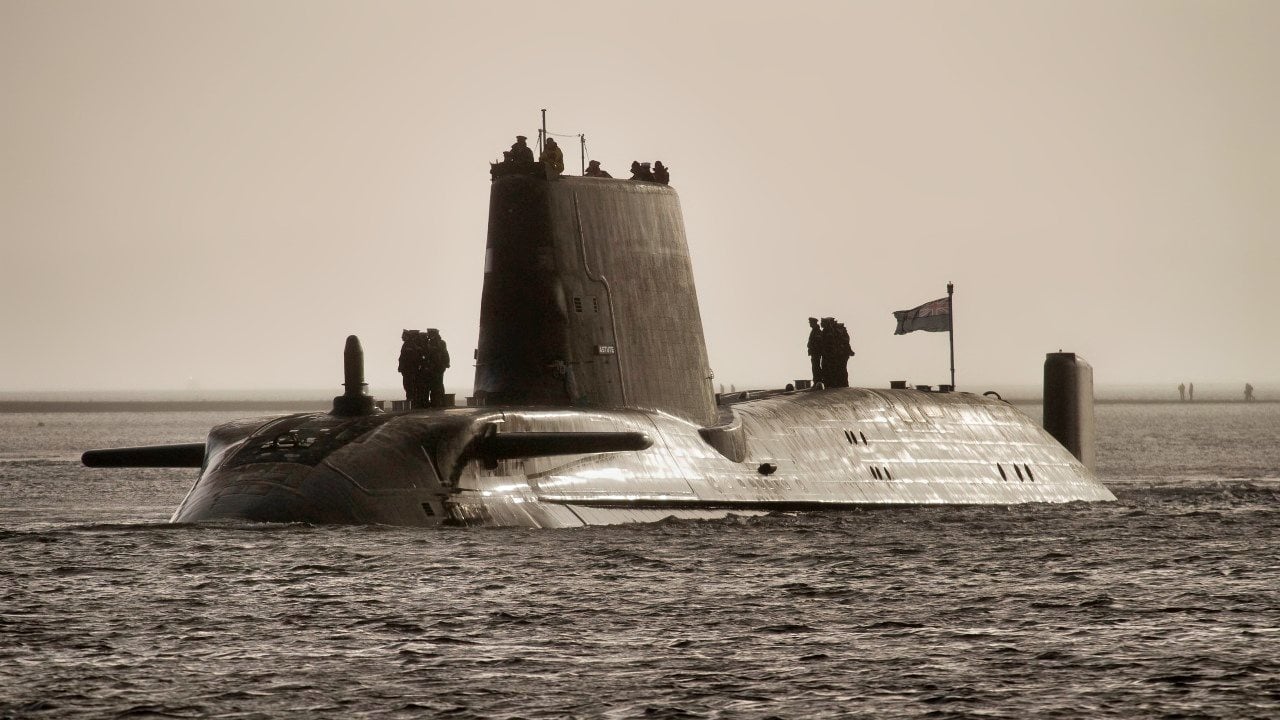Vanguard-Class: Royal Navy's Most Powerful Submarine Has Only 1 Mission
The UK’s Vanguard-class submarines, the largest ever built in the country, are set to be replaced after three decades of service. These 16,000-ton ballistic missile submarines, introduced in the early 1990s, have been a crucial part of Britain's sea-based nuclear deterrence, carrying Trident missiles capable of reaching targets up to 4,000 miles away. Outfitted with Rolls-Royce PWR2 nuclear reactors, the Vanguard-class includes four submarines: Vanguard, Victorious, Vigilant, and Vengeance.
Summary and Key Points: The UK’s Vanguard-class submarines, the largest ever built in the country, are set to be replaced after three decades of service. These 16,000-ton ballistic missile submarines, introduced in the early 1990s, have been a crucial part of Britain's sea-based nuclear deterrence, carrying Trident missiles capable of reaching targets up to 4,000 miles away. Outfitted with Rolls-Royce PWR2 nuclear reactors, the Vanguard-class includes four submarines: Vanguard, Victorious, Vigilant, and Vengeance.

-The new Dreadnought-class submarines will replace the aging Vanguard-class. Four Dreadnoughts are planned, with three currently under construction. These new submarines will also carry Trident missiles and are designed for a service life of nearly 40 years.
-Despite delays in the Astute-class submarine program affecting the Dreadnought timeline, the transition marks a significant update to the UK’s naval capabilities. The Dreadnought program, costing £31 billion, reflects the UK's commitment to maintaining a robust sea-based nuclear deterrent.
UK Vanguard-Class Submarines to Be Replaced After Three Decades of Service
The British Vanguard-class, a massive ballistic missile submarine, is soon to be replaced after serving for multiple decades. Capable of displacing 16,000 tons (submerged), the Vanguard-class is the largest submarine made in the United Kingdom.
In fact, the Vanguard displaces twice as much as the submarine she replaced, the Resolution-class. But having been introduced thirty years ago, the Vanguard-class submarines are now outdated; The Royal Navy will retire all four – the Vanguard, Victorious, Vigilant, and Vengeance.
Meeting the Soviet threat
As you might expect for a NATO ballistic missile submarine unveiled in 1994, the Vanguard was built to provide the Soviet Union with a nuclear deterrent. And unlike the United States, who relied upon a nuclear triad, which spread nuclear deterrent responsibilities across the land, air, and sea, the British focused primarily on sea-based deterrence – meaning that the Vanguard was of outsized importance. To further enhance the Vanguard’s deterrent abilities, the British purchased Trident missiles from their American allies, a deal that then-Prime Minister Margaret Thatcher oversaw. The Trident missile can reach targets up to 4,000 miles away and are fired from the Vanguard’s ballistic missile tubes.
The Vanguard also carries four 21-inch torpedo tubes, which can carry up to 16 Spearfish heavyweight torpedoes. The Spearfish torpedo can hit target while traveling at faster than 90 miles per hour, detonating a 660-pound explosive charge. The torpedo gives the Vanguard both anti-submarine and anti-surface abilities.
Vickers Shipbuilding and Engineering, which is currently BAE Systems Submarines, built the Vanguard-class, the first of which was commissioned in 1993, and the last of which was commissioned in 1999.
All four Vanguards are outfitted with a Rolls-Royce PWR2 nuclear reactor, which can convert water into steam to drive the engines and generate electricity. The Vanguard can reach speeds in excess of 25 knots – a respectable speed for the nearly 500-foot vessel – for a virtually unlimited range. The PWR2 has twice the service life as previous models, and estimates hold that the Vanguard could circle the globe 40 times before needing to refuel, although this theory is unlikely to have been tested.
Set for replacement
The Dreadnought-class is scheduled to replace the aging Vanguard class. The Dreadnought will also use the Trident missiles from the Vanguard, however. At present, three Dreadnoughts are under construction, with four planned total. The Dreadnoughts are expected to be named: Dreadnought, Valiant, Warspite, and King George VI. The Dreadnought will be slightly longer than the Vanguard, measuring 504 feet long, and similarly, will displace about 17,000 tons.
The Dreadnought is expected to have a service life of nearly 40 years, which represents a 50 percent increase over the Vanguard. And the Dreadnought better last awhile, at 31 billion pounds, the program is extremely expensive.
While the Dreadnought will replace the Vanguard, delays to the Astute class submarine construction are in turn causing delays to the Dreadnought class, which may mean the Vanguard gets to stay in service a little while longer.

About the Author: Harrison Kass
Harrison Kass is a defense and national security writer with over 1,000 total pieces on issues involving global affairs. An attorney, pilot, guitarist, and minor pro hockey player, Harrison joined the US Air Force as a Pilot Trainee but was medically discharged. Harrison holds a BA from Lake Forest College, a JD from the University of Oregon, and an MA from New York University. Harrison listens to Dokken.
All images are Creative Commons.


